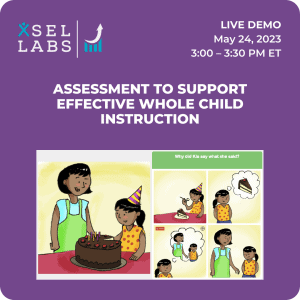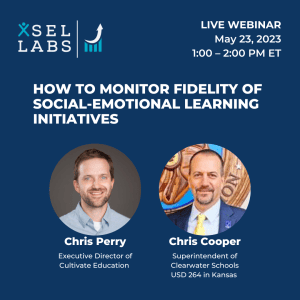SEL in the School Improvement Plans
According to two large-scale pre-pandemic surveys of educators, more than half of American school districts are implementing some form of social and emotional learning (SEL) initiative. These initiatives involve adopting SEL curricula, developing instructional approaches known to nurture SEL, and acting intentionally to improve school climate. SEL is becoming an integral part of education and many school improvement plans are making SEL a priority.
In our conversations with educators, we have learned about the range of SEL-related goals that schools prioritize. The most common SEL-related goal we hear about involves reductions in disciplinary actions such as office discipline referrals (ODR) and suspensions. This is understandable—constructive engagement in the school community is key to learning, and ODRs and suspensions are visible reflections of low-level constructive engagement.
There are, however, limitations to measuring a reduction of problem behaviors to track progress towards a school improvement goal. While reducing ODRs and suspension rates is important, and analyzing ODR and suspension rates do provide opportunities to reflect on SEL, SEL at its core is about student competencies and school climate. Discipline data is not a direct SEL measure, and nor is it helpful for guiding a strength-based approach to implement restorative SEL instructional practices, for example.
What Should be in All Plans
What would be a better way? Well, we recommend articulating measurable goals in school improvement plan sand identifying the method for measuring these goals in ways that educators have done with academic student achievement goals. Common academic benchmarks help educators define and track school improvement goals and SELweb is a common benchmark that also helps educators define and track school improvement goals.
You might consider student self-report surveys or teacher rating scales as a SEL competence measure. However, both measure perceptions of SEL competencies, not the competencies themselves. Better than administrative records of discipline data for sure. Still, we recommend performance-based direct assessments, like SELweb. SELweb is a benchmark assessment that measures the difficult-to-observe thinking skills that students apply to real-life situations. Like academic assessments, SELweb challenges students to demonstrate their competence by solving tasks, thus providing an index of student competence rooted in what students know and can demonstrate, rather than what they, or their teacher, thinks they know and can demonstrate.
Similarly, an SEL-forward school improvement plan might target school climate, the conditions of learning as experienced by students. School improvement planning, for example, may include the goal of increasing by 5% the proportion of students who report feeling safe, feeling connected to peers and adults, and feeling supported as learners. In addition to high-quality competence assessments, xSEL Labs offers a student climate survey to inform this kind of goal.
The Bottom Line
Whatever assessment you choose and use, we recommend that SEL goals in school improvement plans articulate social-emotional student competencies and/or specific dimensions of the climate, and that the assessments used to measure progress towards those goals be designed to measure those specific dimensions of student competence and climate.



